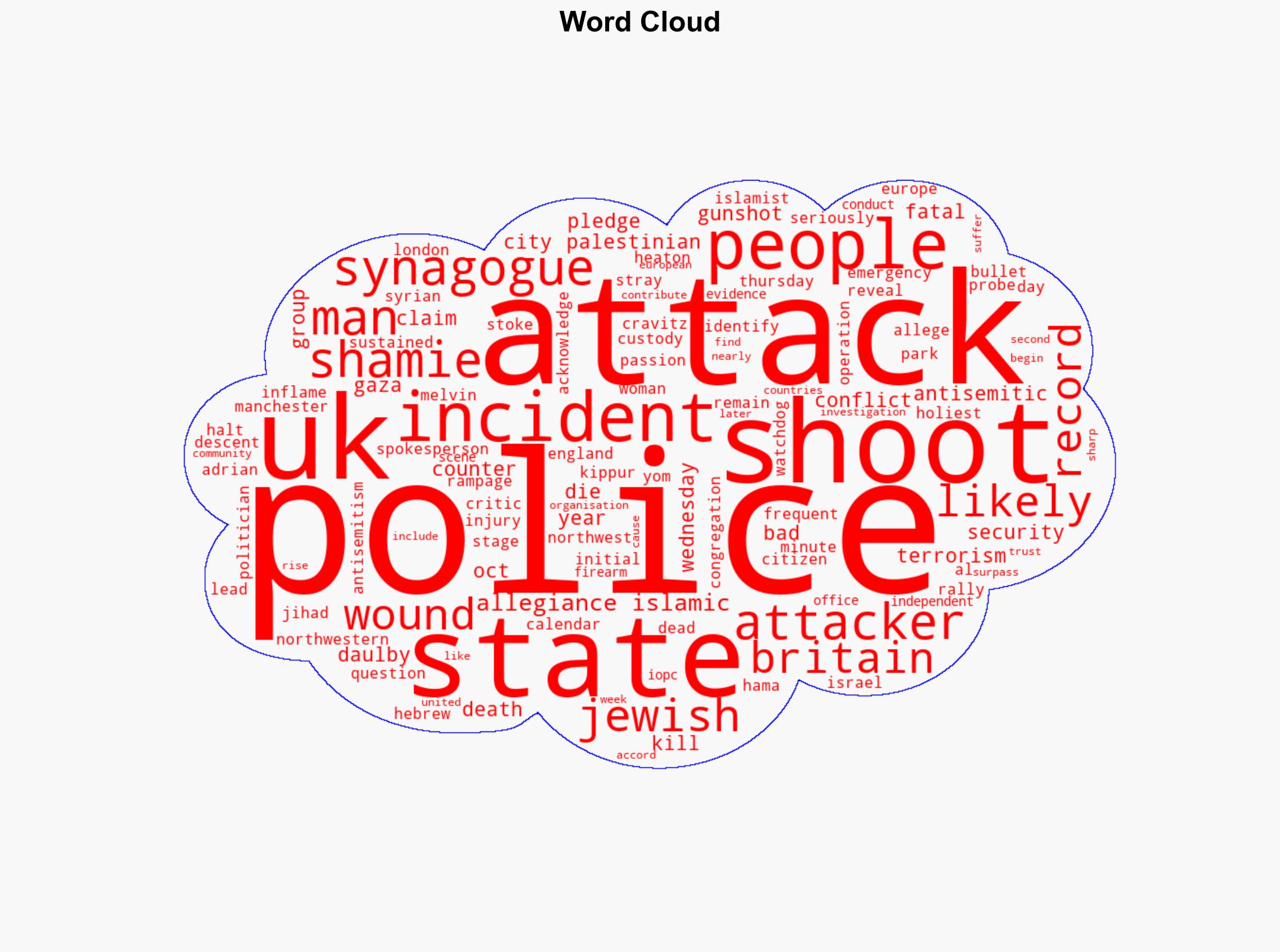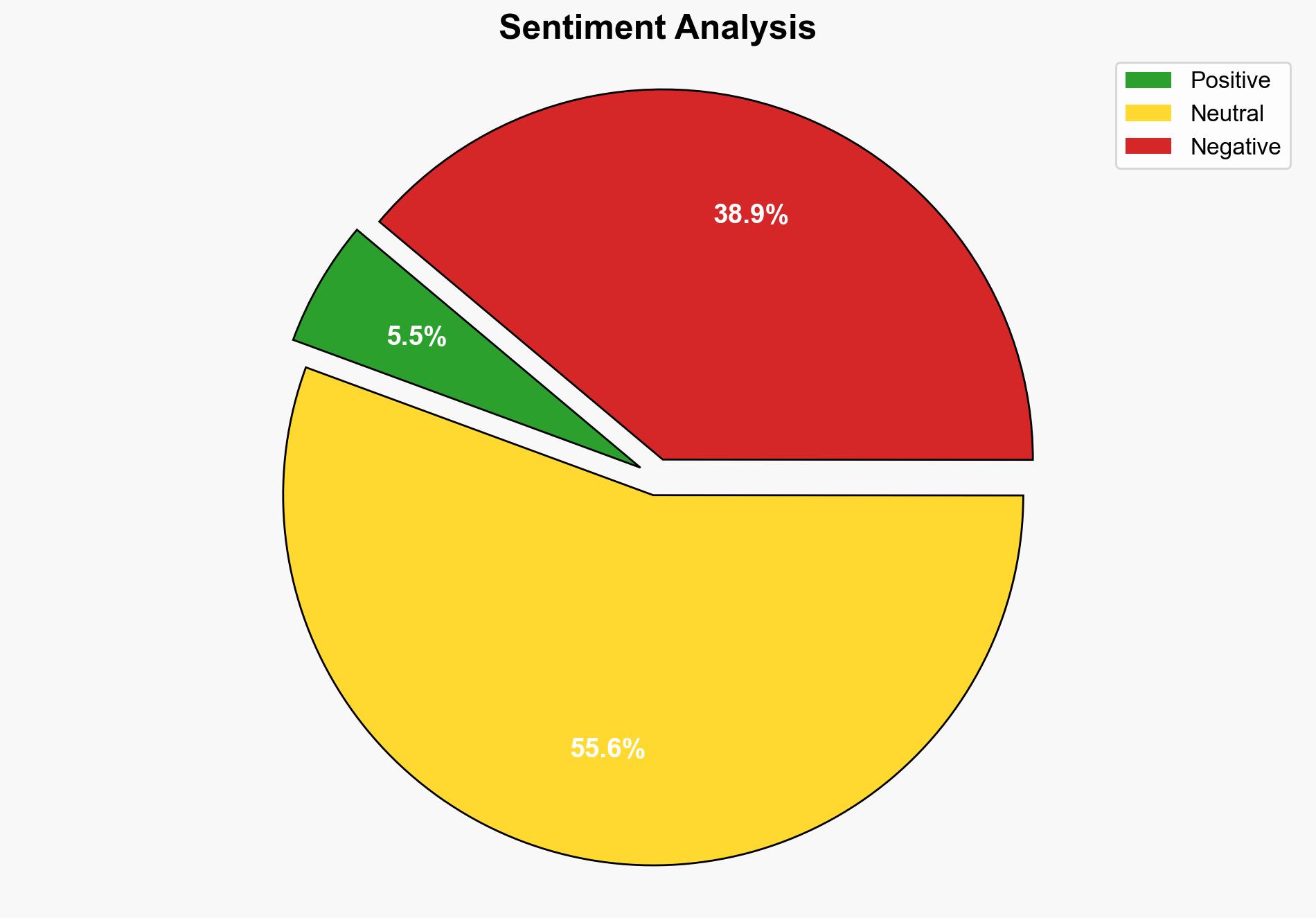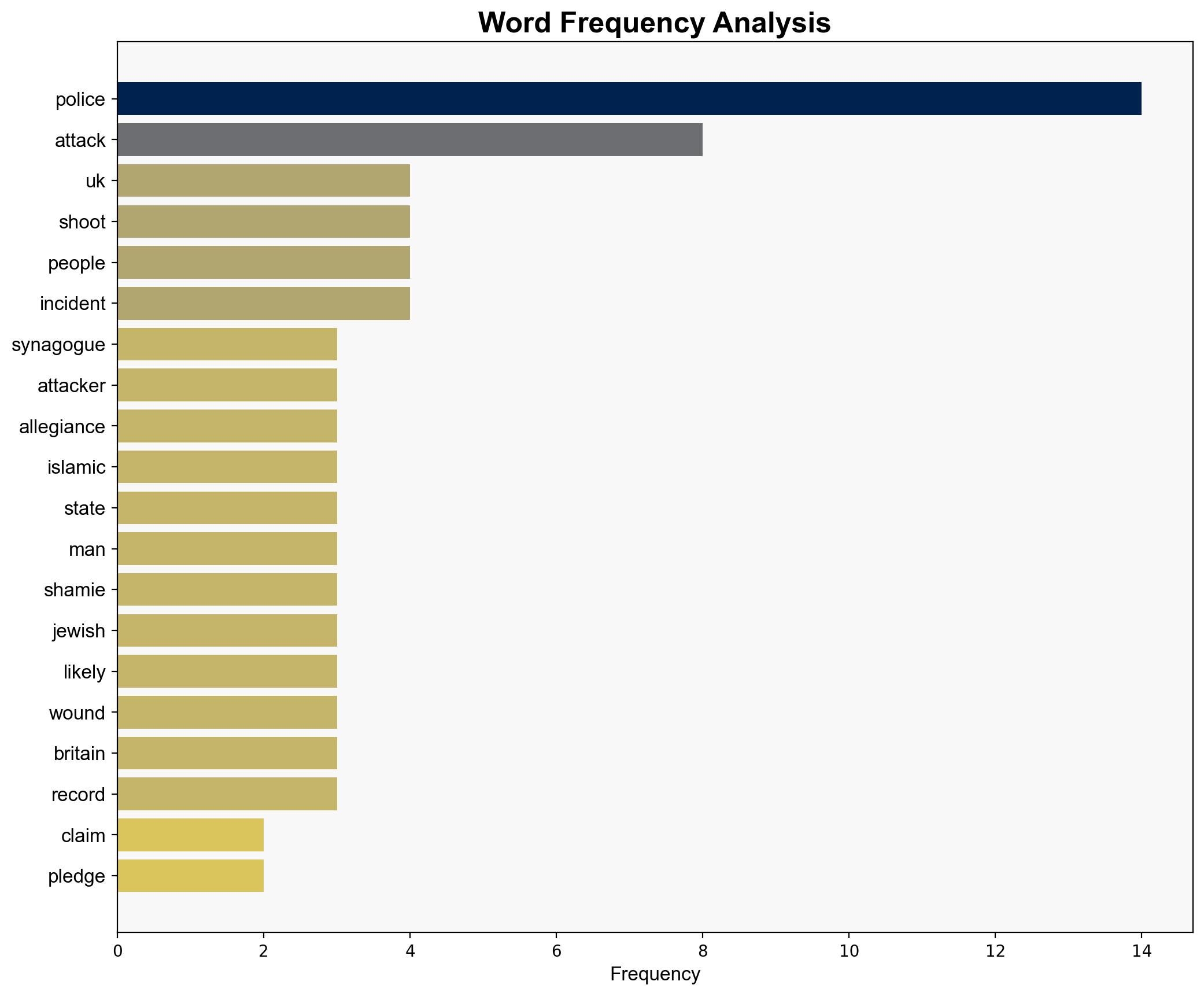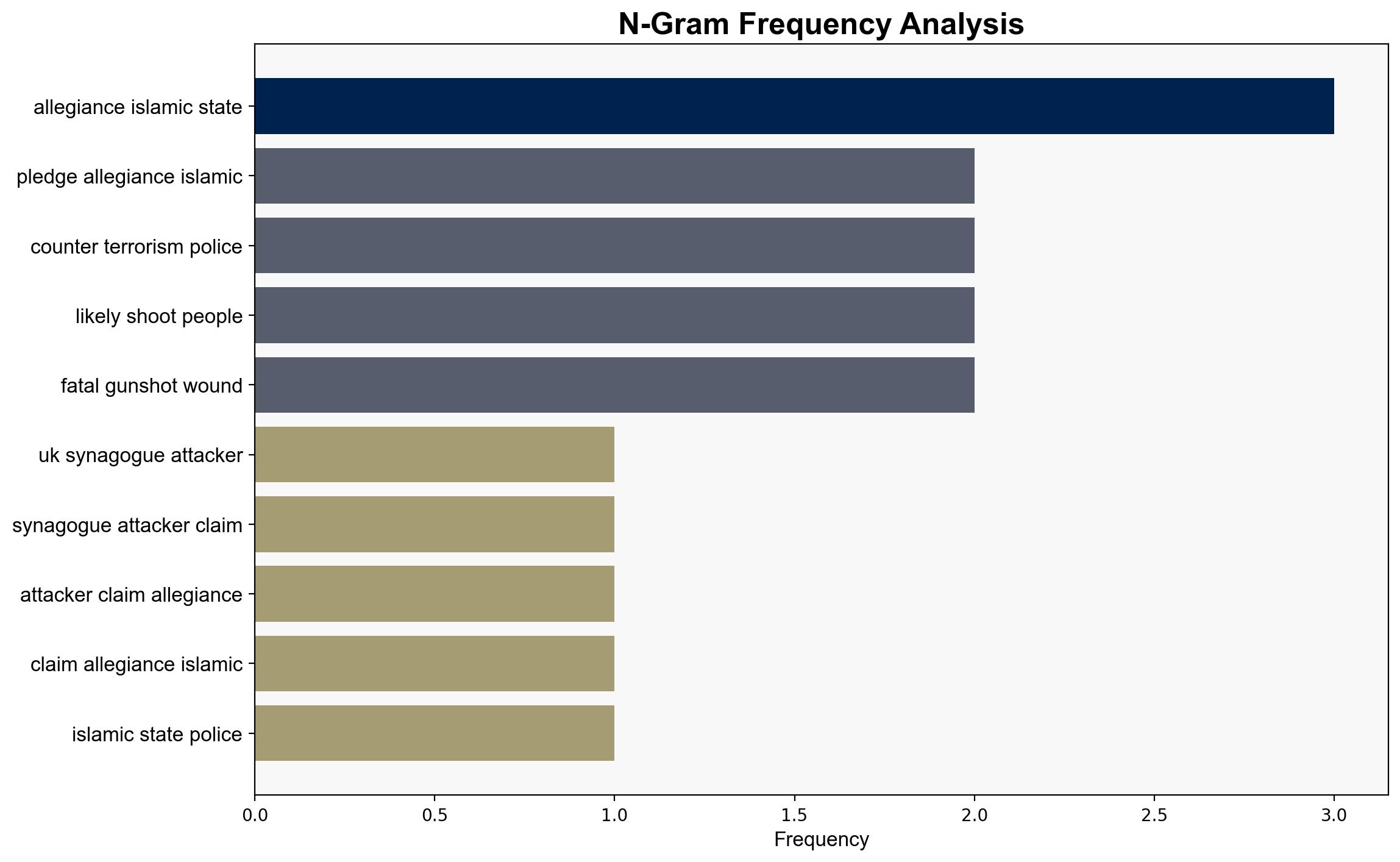UK synagogue attacker claimed allegiance to Islamic State in call to police – CNA
Published on: 2025-10-08
Intelligence Report: UK synagogue attacker claimed allegiance to Islamic State in call to police – CNA
1. BLUF (Bottom Line Up Front)
The most supported hypothesis is that the attack was an isolated act of terrorism inspired by extremist ideology rather than a coordinated effort by a larger group. Confidence level: Moderate. Recommended action includes enhancing community engagement and intelligence-sharing to prevent similar incidents.
2. Competing Hypotheses
Hypothesis 1: The attack was a lone-wolf operation inspired by Islamic State ideology, with no direct operational support from the group.
Hypothesis 2: The attack was part of a coordinated effort by a network of extremists, potentially linked to ongoing geopolitical tensions involving the Gaza conflict.
Using ACH 2.0, Hypothesis 1 is better supported by the lack of evidence indicating coordination or communication with a broader network. The attacker’s immediate pledge of allegiance during the attack suggests self-radicalization rather than external orchestration.
3. Key Assumptions and Red Flags
Assumptions: It is assumed that the attacker’s claim of allegiance was genuine and not a diversion. It is also assumed that the police’s account of events is accurate.
Red Flags: The absence of clear evidence linking the attacker to a broader network raises questions about the thoroughness of intelligence gathering. The possibility of other individuals being involved but not yet identified remains.
4. Implications and Strategic Risks
The incident highlights the persistent threat of lone-wolf attacks inspired by extremist ideologies. There is a risk of copycat attacks, particularly during periods of heightened geopolitical tension. The potential for increased antisemitic incidents poses a risk to community cohesion and public safety.
5. Recommendations and Outlook
- Enhance intelligence-sharing between local and national agencies to identify radicalization signs early.
- Increase community outreach programs to build trust and cooperation with potentially targeted communities.
- Scenario Projections:
- Best Case: Improved community relations and intelligence efforts prevent future attacks.
- Worst Case: A series of similar attacks lead to heightened societal tensions and security measures.
- Most Likely: Sporadic lone-wolf incidents continue, necessitating ongoing vigilance.
6. Key Individuals and Entities
– Jihad al Shamie (attacker)
– Adrian Daulby (victim)
– Melvin Cravitz (victim)
7. Thematic Tags
national security threats, counter-terrorism, regional focus, community relations





